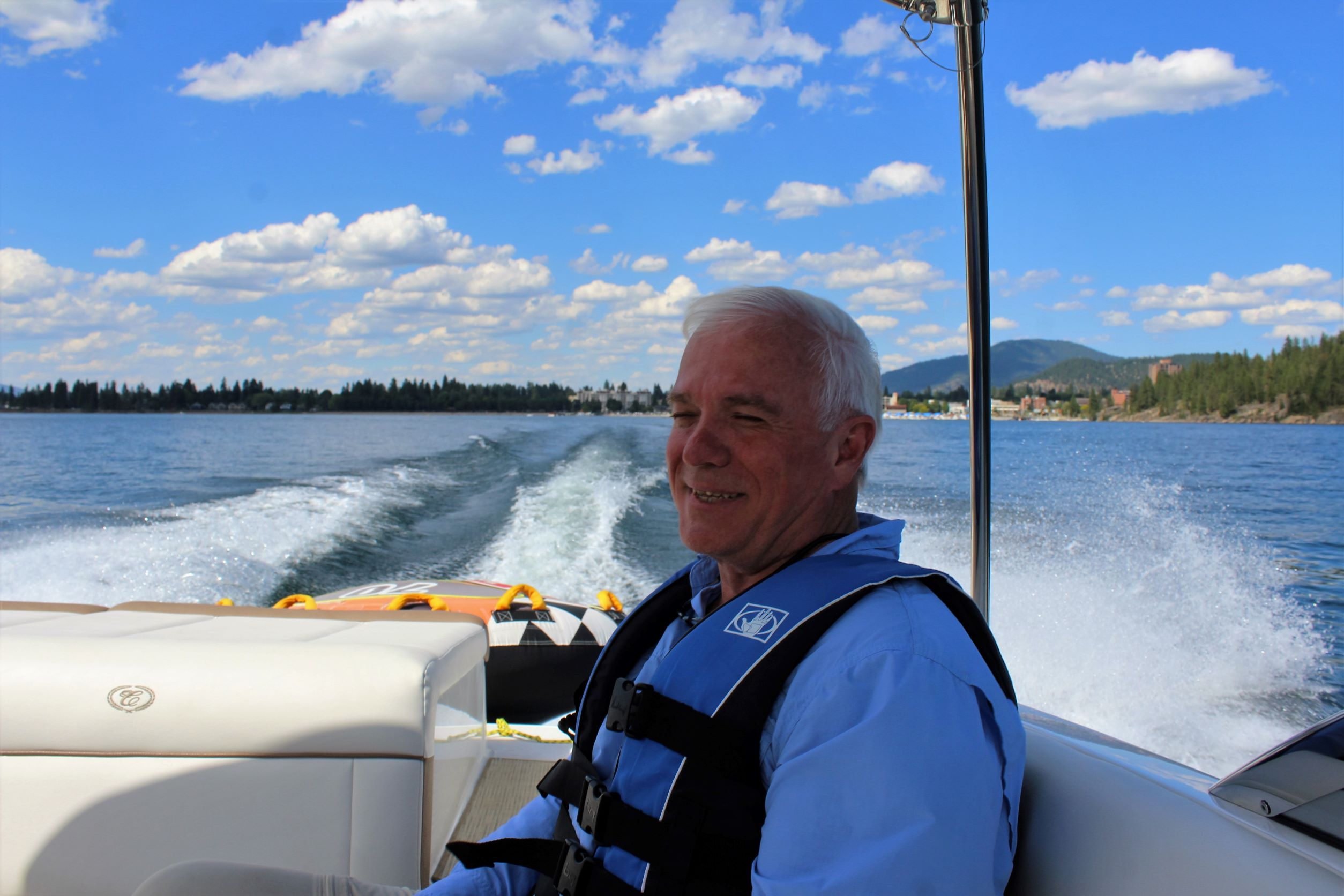
listen here the audio of this study https://www.youtube.com/watch?v=Q6uzaU5n5xk&list=PL1a63TsBRKpW0rI1pvH8K0PQerOZ3io7c&index=4&ab_channel=Gracedevotionals
Our reading today is found in Luke 3:23-38, and John 1:1-18. These portions of Scripture will complete our first studies on Jesus’ Origen and Purpose in the Gospels.
In the third chapter of Luke, we have a second genealogy of Jesus, different than the one we saw in Matthew 1:1-17. Luke’s genealogy traces Jesus’ ancestry back to Adam. Matthew traces His ancestry back to Abraham.
You might think that Luke just went further back in history to demonstrate that Jesus was human. That seems reasonable but a closer look reveals that the two lists are different. There is agreement between Abraham and David, but outside that series they differ significantly.
Many people have searched for the reasons why this is the case and one of the goals here is to give you the tools to investigate it for yourself if that is something you’re interested in. These are a set of texts sceptics use to say the Bible contradicts itself. That doesn’t make a lot of sense to me. The two authors clearly investigated their accounts. Also, the way genealogies were understood in ancient Israel was far more complicated that we see in modern ancestries. I’ll speak a little about why the two genealogies have importance to us today and then give some online resources you might be interested in. First, the more important things:
Luke’s account has to do with Jesus being the human descendant of Adam. Matthew’s gospel demonstrates that He is the Seed of Abraham. Both are important teachings and are recorded to establish important fundamental truths.
Note that in Luke 3:23 we read that Jesus “was regarded as the son of Joseph.” This was a recognition that Jesus was divinely (uniquely) born but regarded (known as) the son of Joseph. There isn’t a parallel situation in human history that I am aware of and I will leave it at that. We will speak more in depth about Joseph in our next study but will mention just one important thing here. Every child needs a real human father.
It is right to mention a special thanks to the valiant men who have stepped in and assumed the role of father for many children who might otherwise grow up without one. A few years back I was traveling and struck up a conversation with the gentleman who was waiting tables in my area of the restaurant. It turned out that he married a wonderful woman late in life and the union included a son of hers. She had been abandoned by her previous husband. The child, now an adult, was profoundly impacted by Down’s Syndrome. As he spoke of his wife and now his adopted son, I couldn’t help but think of what God can do as He mends the broken relationships of this life. We spoke of faith and commitment and how the things we can truly make better in this world are usually those closest to us. Sometimes the hardest thing is the one we should do.
As I said before, Luke’s genealogy was important to the first century church because it traces Jesus’ lineage back to the first human. It may seem strange that such a lineage would be necessary. Aren’t we all descendants of Adam? We are indeed but the point here is that Jesus was one of us and not some heavenly being who took on human form as the Gnostics of his day would later claim. Neither was He a descendant of the angelic invasion of humanity that we see in Genesis 6:1-4.
The heresy of Gnosticism in the early Church is an important study for any Bible teacher. When the Gospel was preached in the Greek world, the Church had to confront false teachings brought in by Gnostic believers. The influence of the Gnostics and other ancient texts may be why we see this extension to Adam in Luke’s account. I simply don’t know and don’t want to speculate further. As the church fathers’ later theology would point out: Jesus is fully God and fully Man. That seems to me to be the reality behind the two genealogies.
If you would like to better understand the differences in Matthew and Luke’s genealogies, as well as Gnosticism, a simple on-line search will yield many points of view on those subjects. The links below may serve as a good start for your own study. For now, we will leave our text in Luke and move to John chapter 1. If you have questions, please let me know through one of the messaging options.
https://en.wikipedia.org/wiki/Genealogy_of_Jesus https://www.gotquestions.org/Jesus-genealogy.html, https://www.britannica.com/topic/Christianity/Early-heretical-movements, and https://www.britannica.com/topic/Docetism.
John’s opening statements in 1:1-18 give us great insight into the early-Church teaching about Jesus’ origin and purpose. In these eighteen verses, the author speaks of many essential doctrines that form much of the worldview for the believer. They could be presented in a different format but this is my take on them.
John 1:1-5 GOD AND THE NATURAL WORLD
When we understand why the world was created, we will have a better understanding of God’s eternal plan and the role His Son plays in human history. Each of these points are elements of larger studies of Bible doctrine.
- The material world was created. If you spend any time listening to scientific evidence about the age of our planet and the universe it is found in, you should know that the evidence we can measure seems to point to a very long process. The Scripture indicates a much shorter series of events but doesn’t attempt to give a precise and detailed history of our world, much less the Universe.
The more important question of why we came into existence is something science can never tell us. We should never sacrifice God’s revealed purpose and plan on the altar of human reason.
Scientists are trained specialists in specific fields. They are not theologians. When they look at evidence, they tend to look for what they believe should be there. That is true for every branch of science, including Biblical Studies when it is subjected to human reason.
Within Biblical Studies, the eyes of human reason can ignore the Divine Mind that is behind it all. The question then arises: Are we promoting ourselves in some academic adventure or letting God speak and trying to understand how the written text relates to our lives? Human Theology is something we must always look to with great care. A few texts that can help you with things like this include: 2 Timothy 3:16-17, 2 Peter 1:12-21, Romans 1:25, Matthew 24:24, 2 Timothy 4:3-4, Acts 20:28-30, 2 Peter 3:14-18, 1 John 4:1-6, Titus 1:6-16, and 2 Peter 2.
We are called to live and teach by faith, not traffic in human reason. Those who do can ultimately wonder if God is even real. Faith is as simple as believing God. Human reason dressed up as something divine won’t get us any closer to God’s truth. I don’t want to be part of the at crowd.
- In Him was life… and that life was the light of men. Jesus wasn’t just another teacher, He was (and is) life and that is what brings light to the dark world we live in. I’ll repeat that concept that we can easily move past: that life is our light. The simplicity and depth of this truth is easy to miss. We are talking about these things because in Him is life. We love life. We think we understand it but it is not our life, it is His.
- The life in Him shines in the darkness. This concept of spiritual darkness is fundamental to our understanding of God’s plan. Light doesn’t originate in darkness. Once the light shines, the darkness cannot prevail; it cannot consume the light. If you were wondering about the purpose of your life as a believer, it is to let His light shine in you; to let His life be revealed in you. Jesus is the only One who can change the world and He does that through people who reflect His life.
John 1:6-13 LIGHTS IN THE WORLD
- John the Baptist was sent to the Jewish world to testify about the Light. The word translated “testify” here is the Greek word “” Although it reminds us of martyr, that is largely a concept of our history as the Church. To the Greek hearer, this word spoke of a witness, someone who’s life and reputation backed up his or her words.
John’s calling was specific; it was to the Jewish world. His reputation was as important as his message. His humility was also evidence that he was sent by God. He wasn’t the Light and didn’t pretend to be. He was just there to testify about the Light.
Later, he would say to his disciples that he had to decrease but Jesus had to increase. What a wonderful example for us as believers!
- The True Light gives light to everyone. Never doubt the potential for everyone walking though deep darkness to recognize the Light in you. Each human being has been given the capacity to recognize God’s life. In a sense, the dark journey we have been on has prepared us for the moment someone gives witness to the Light.
- Why don’t people respond? Given that the Light is in the world, and we are witnesses to it, one might expect that the message would be received more universally.
That is a fair question and one that can poison our faith if we don’t stand back and trust God. The darkness doesn’t overcome the Light. The Light reveals the darkness and removes all claims of ignorance. In many cases, our testimony is meant to lead others to salvation. In others, it is to make everyone responsible before God.
John tells us several important things:
- Every human brinh can recognize the Light.
- The world (kosmos – the world system) didn’t recognize
- His own (the Jews) didn’t receive Him (despite the prophets, signs and wonders).
- But some did receive Him.
This is where the majesty of the Plan of God begins to shine. Everyone becomes accountable. Everyone could believe. Those who do, those who simply believe in His name, have the right (like an inalienable right) to become children of God.
The desire or will of man could never do that. O, the depth of the riches of the wisdom and knowledge of God! How unsearchable are His judgments, and untraceable His ways! (Romans 11:33)
In summary, the Gospel message is relational, individual, and contingent upon a decision by the hearer. The decision to receive Christ is simply one of believing on his Name, and the believer is then born of God. That rebirth experience changes everything. No one can be born again outside of the Plan of God.
John 1:14-18 THE OVERWHELMING PRESENCE
- The Word became flesh and made His dwelling among us. How can words adequately describe this? I wonder if even the angels in heaven saw this coming. What an unpredictable expression of love for His creation. Paul said it this way in Philippians 2:6-8 “Who, existing in the form of God, did not consider equality with God something to be grasped, but emptied Himself, taking the form of a servant, being made in human likeness. And being found in appearance as a man, He humbled Himself and became obedient to death—even death on a cross.”
Paul led into verses 6 through 8 with the words, “Let this mind be in you which was also in Christ Jesus.”
Please note two things: First, there is a mind that can be in us, and second, John is beginning to speak in the plural (Made His dwelling among us). You’ll know when you’re thinking reflects the Body of Christ when it moves from me to us.
- We have seen His glory… full of Grace and Truth. Being with Jesus is an experience that is best described in this way: full of Grace and Truth. It is about fullness, and overwhelming presence. We see it as fullness because of our limited human capacity. The experience isn’t simply about truth but truth that is all about Grace. It is limitless, eternal, divine, literally God with us. It is seeing His glory.
- John testified concerning Him. He cried out… There isn’t much more we can do but cry out when we’ve been with Jesus. If you want to be a better witness, let God fill you with Grace and Truth.
- He who comes after me has surpassed me… How small we become when we stand before the glory of God, bathed in Grace and Truth!
- From His fullness we have all received grace upon grace. The experience of believers being changed together is something not always found in churches today. As we study Jesus’ ministry, try to think of it those three years as the beginning of the Church He would build.
So often we read Acts 2:42-47 and long for that kind of corporate experience. I believe the Acts 2 manifestation of corporate life is the product of Jesus’ three years with His disciples. He didn’t pastor his little flock the way most church leaders do today. Pay attention and you’ll see it as we move through the Gospels. Watch for things like the way He trusts them to be led by God. Look at the questions he asks them and the examples He sets.
Grace upon grace is a process. Peter called it the manifold grace of God in 1 Peter 4:10 where we are told to be good stewards of such a gift that is expressed by serving one another. It begins by hearing, is nurtured through contemplation, is reinforced by the examples set by others, and at some point, begins to flourish. It is very much like the living waters Jesus spoke of with the Samaritan woman in John 4. My advice for a local assembly is “find a place where grace upon grace is happening.”
- Religion is never enough. John, the author of this Gospel was raised as a Jew and knew experientially that the Law of Moses never produced the life they found in Jesus. The Law of Moses was given for other reasons that are detailed later in the New Testament. Simply stated, what Jesus did was different. Grace and truth only come through Jesus, not a law-based approach to God.
- There is no other way to know God. Through the Son, we literally know God. When we see the Son, we see the Father. Through Christ, God reaches us. There is no other way. This distinction between a law-based approach and knowing God through the Son is a teaching that took time for Jewish people to understand and, as I said, will be developed further throughout the New Testament. For now, just consider how John describes these two things in verse 17; “For the law was given through Moses; grace and truth came through Jesus Christ.” This is a statement of contrast and reflects something very important that John learned in his time with Jesus. The Law simply wasn’t enough.
- Jesus is that Way. Finally, John tells us that Jesus is at the Father’s side; literally from the Greek, He is in the Father’s bosom, near His heart.
So, what has John told us? First, that God created the world with a purpose. Jesus is the Word that spoke the material world into existence. He then, in the fulness of time, sent His son to bring light to the darkness in human hearts.
Sharing that truth begins with a witness. It is followed by recognition that the human heart is dark and without light and life. That belief qualifies the believer for spiritual rebirth. They have the right to be born of God. The decision to receive Christ as one’s personal Savior and yielding to Him as Lord makes it happen.
Being introduced to grace and truth begins the process of believers functioning as the Body of Christ here in the world. In time, they begin to understand grace upon grace. Together they see the glory of the invisible God in Jesus Christ.
As a result, they can testify with all honesty that what they’re saying is true. It is something they have experienced first-hand, just as John was saying.
That isn’t going to be easy to explain to someone who hasn’t decided to follow Jesus. It is very much like what Jesus said to Nicodemus in John chapter 3:7-8; “Do not be amazed that I said, ‘You must be born again.’ The wind blows where it wishes. You hear its sound, but you do not know where it comes from or where it is going. So it is with everyone born of the Spirit.”
If all of this seems strange to you, please give it time. Every person needs to listen to what Jesus has said, look closely at the evidence of His presence in the lives of believers, and decide for oneself if these things are true. That is what every true believer has done. My confidence is that God will not let you down!
The reading for our next Bible Study can be found in Luke 1:39-80, Matthew 1:18-25, and Luke 2:1-40. These will take us from the birth of Jesus through his dedication at the Temple and the family’s return to Nazareth.
You can see the study that continues in this link:G3a The Birth of Jesus
You can also see and comment on them on your social networks:
https://www.facebook.com/profile.php?id=100073097150614,
https://www.facebook.com/gracedevotionals1
https://www.instagram.com/gracedevotionals/






0 Comments